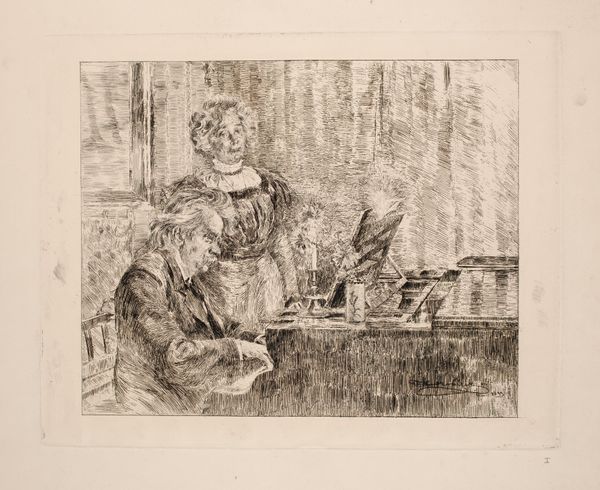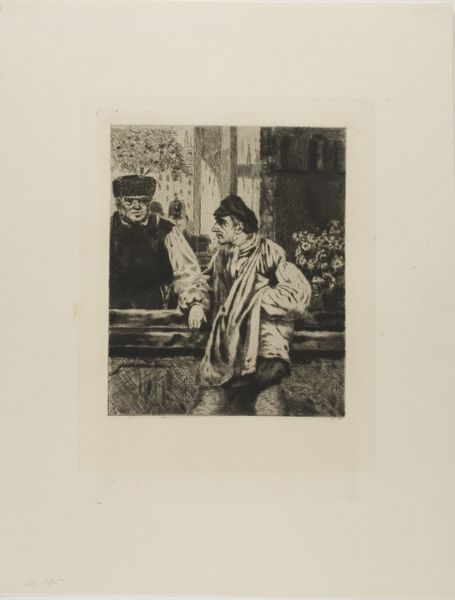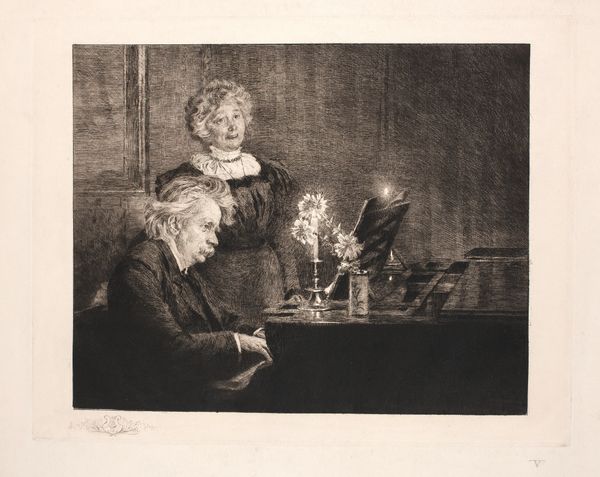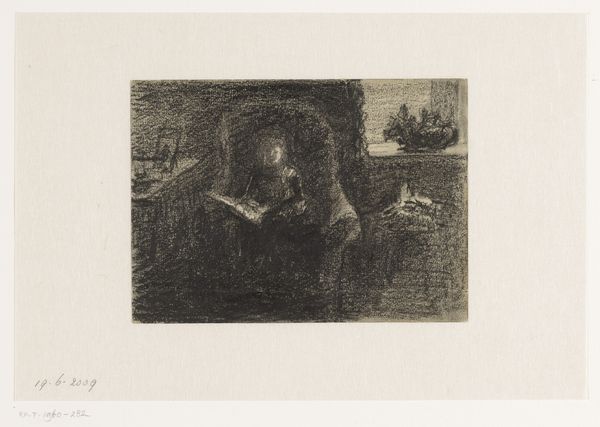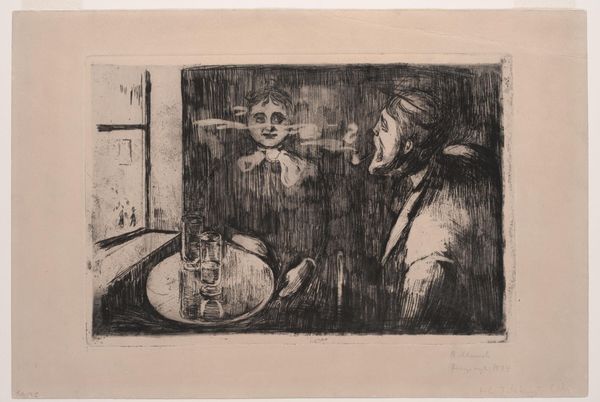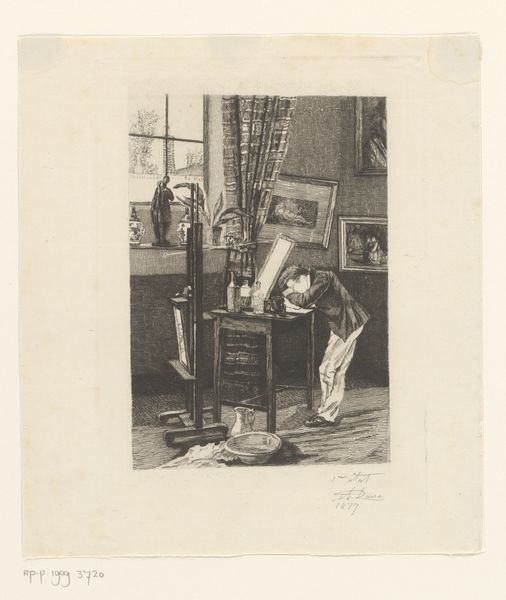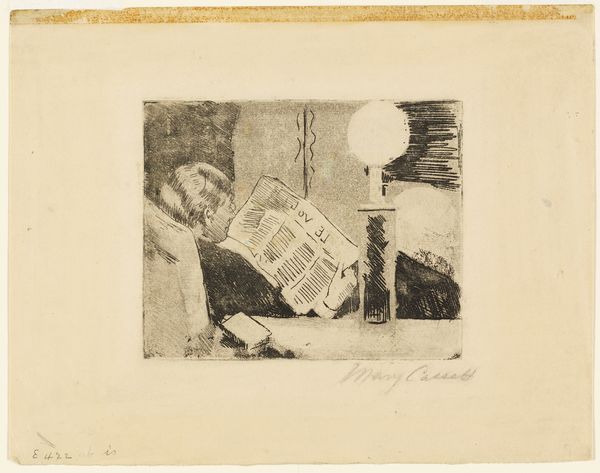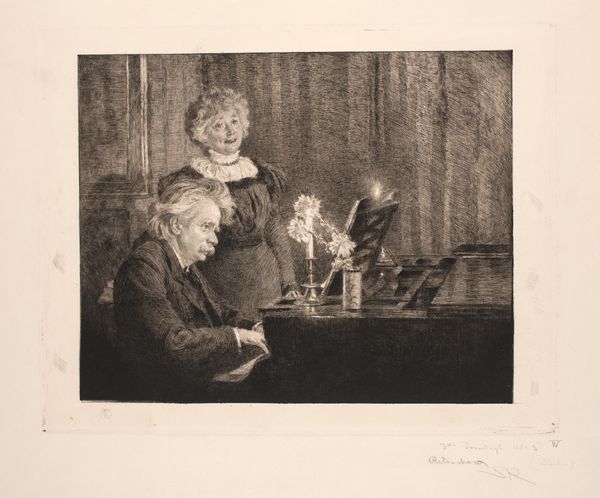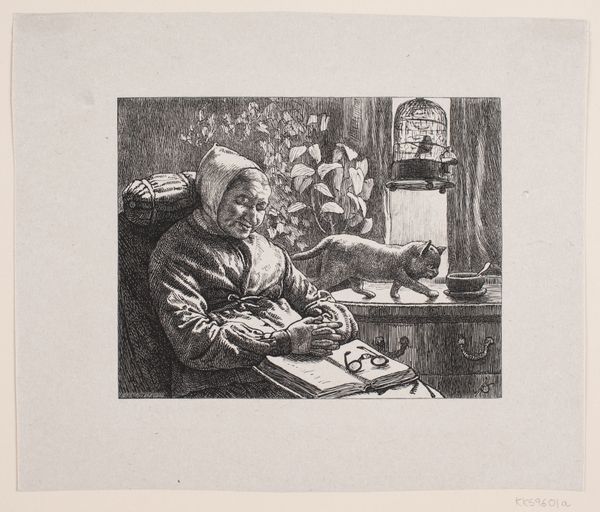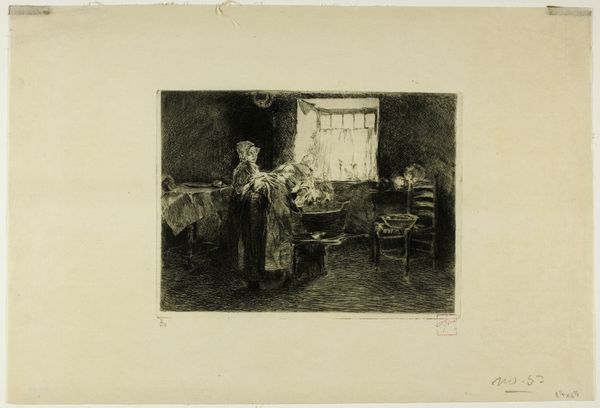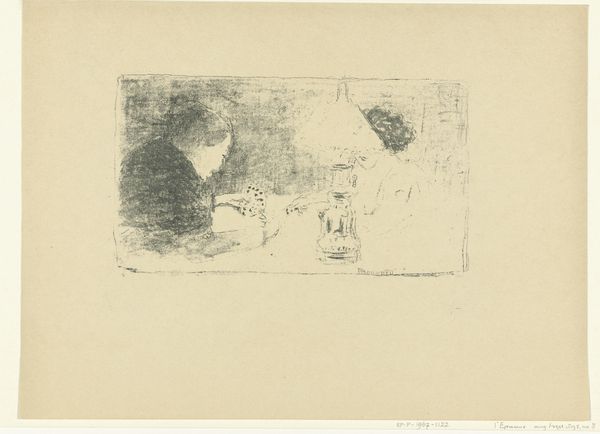
print, engraving
#
pencil drawn
#
amateur sketch
#
light pencil work
# print
#
pencil sketch
#
incomplete sketchy
#
charcoal drawing
#
charcoal art
#
pencil drawing
#
pencil work
#
tonal art
#
engraving
Dimensions: 387 mm (height) x 484 mm (width) (plademaal)
Curator: Here we have P.S. Krøyer's 1899 print, "Edvard and Nina Grieg by the Piano," held at the SMK, the National Gallery of Denmark. Editor: It's striking. Somber, almost, despite what I imagine is meant to be a cozy, domestic scene. The lines are so etched and heavy. It feels…laborious. Curator: Interesting observation. Consider the context. Krøyer was part of the Skagen group, known for portraying the lives of fishermen and everyday people. This, however, is a depiction of cultural figures, specifically Norway’s most celebrated composer, Edvard Grieg, and his wife. How does that influence its public reception? Editor: It places emphasis on their craft, on the labour involved in creating music. It challenges this romantic ideal of artistry simply springing forth fully formed. We see Grieg hunched over the keys, clearly at work. It pulls back the curtain. Curator: Precisely. But there’s a level of reverence here, wouldn't you agree? These prints were accessible to a wide audience, creating a cult of celebrity around figures like Grieg, thus consolidating a particular version of Scandinavian cultural identity. Editor: But the medium itself, the engraving process, demands a kind of intense physical interaction. The artist's hand, pressing into the metal, resonates with Grieg's hand striking the keys. They're both involved in the physical manifestation of art. Curator: Yes, and it invites questions about artistic labour, about who gets to be seen as a 'worker' versus an 'artist'. How much of Grieg's fame rested on the performances of working-class musicians, for example? This image perhaps inadvertently captures these layered social relationships. Editor: So it reveals the work, and questions who benefits. I initially saw just somber lines, but now, seeing it, there are so many processes exposed at once. The process of making art and its circulation. Curator: Precisely! And the socio-political contexts are integral to understanding its full complexity and historical impact.
Comments
No comments
Be the first to comment and join the conversation on the ultimate creative platform.
